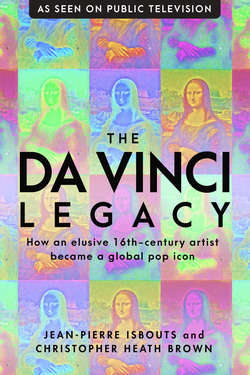Читать книгу The da Vinci Legacy - Jean-Pierre Isbouts - Страница 12
На сайте Литреса книга снята с продажи.
The Legacy of Leonardo’s Studio
ОглавлениеThe Chateau du Clos Lucé, Leonardo’s last home before his death, is located some 140 miles from Paris, in what is now the center of Amboise. It can be reached by car in three hours or less, depending on the condition of the local roadways and the much-feared Périphérique ring road around Paris. Many experienced visitors elect to take the train from Saint-Lazare train station, for a journey of just two hours. From the Amboise railway station, a fifteen-minute walk brings them to the grounds of the chateau, and into a different time and place. Painstakingly restored to a condition that resembles the period of Leonardo’s stay, the chateau is a wonderful place to visit, even if much of its furniture and decoration is not original. Here, for example, is Leonardo’s studio, with life-size reproductions of the Saint Anne and the John the Baptist, as well as a bronze copy of the huge horse he once modeled in clay for the Sforza equestrian monument. Here too is a kitchen, a lovely dining hall, and the large bedroom in which Leonardo conceivably breathed his last, even though the canopy bed itself dates from a later era.
But the most evocative aspect of the chateau is unquestionably its lavish outdoor gardens. Gently sloping down to the river below, bordered by a copse of trees, they have been lovingly maintained. The visitor cannot fail to imagine Leonardo walking along their many narrow paths, immersed in thought, his faithful assistant Francesco Melzi by his side.
What was going through Leonardo’s mind as he strolled through these elegant grounds? Far removed from the heart of the Italian art scene, did he reflect on how his name might be remembered? Did he worry whether his reputation might endure, and whether the many revolutionary changes that he brought to Italian art would be passed on? And if so, would posterity give him credit for these breakthrough innovations? “The fame of the rich man dies,” he once wrote, “but the fame of the treasure remains.” Would that be true for the small group of paintings that he bequeathed to humankind? Leonardo was aware that during his lifetime, his reputation had been increasingly tainted by the verdict of non finito. This was the conviction of many, that the artist, brilliant as he was, in practice was unable to translate his ideas into a tangible collection of paintings and sculptures. That idea was inculcated in the 16th-century mind by Leonardo’s first biographer, Giorgio Vasari, who wrote:
In truth his mind, being so surpassingly great, was often brought to a stand because it was too adventuresome, and the cause of his leaving so many things imperfect was his search for excellence after excellence, and perfection after perfection.8
Another factor that threatened Leonardo’s legacy was that by the time Leonardo had departed from Italy and settled in Amboise, both Milan and Florence were being eclipsed by the explosion of artistic activity in Rome. In other words, the two cities in which he had created his greatest triumphs were now considered passé. In contrast to the effervescent artistic scene surrounding Leo X, Florentine and Milanese artists were simply no longer believed to be up to date.
Some authors believe that this was part of the reason why Leonardo scrupulously documented his observations in his notebooks: so that future generations could learn from his knowledge, even if his art was no longer considered au courant. But it is more likely that Leonardo pinned his hopes on the many pupils and apprentices he cultivated in his studios, each of them adopting his transformative approach to the depiction of three-dimensional reality in paint.
In fact, the scarcity of Leonardo’s work, and his reputation as an elusive genius but also an uncompromising perfectionist, had always carried the whiff of a certain mystique. In theory, that mystique could serve as a powerful enabler for his followers to perpetuate his legacy.
Leonardo da Vinci, Adoration of the Magi, ca. 1481. The work was left unfinished.
